A judicious American response to the protests in Iran could help foster a more responsible government in Tehran while rebuilding the partnership with European governments and others around the world, argues Suzanne Maloney. The developments inside the Islamic Republic should also galvanize a remedy to an early unforced error by the Trump administration—the controversial ban on Iranians traveling to the United States. This piece originally appeared on ForeignPolicy.com.
The protests that erupted across Iran have thrust a crisis and an opportunity upon U.S. President Donald Trump’s administration. Trump came into office palpably itching to take on Iran, but his focus—much like of that of his predecessor—has been squarely trained on Iran’s nuclear capabilities. But nearly three months after Trump’s decision to “decertify” Iran’s compliance with its obligations under the 2015 nuclear deal, the abrupt escalation of the country’s long-standing economic, social, and political grievances has shifted the administration’s focus on how to respond to the upheaval.
It is impossible to anticipate how events will evolve inside Iran. The country’s top officials have acknowledged widespread dissatisfaction while also warning against disorder, blocking key communications tools, and mobilizing mass arrests of demonstrators. If such steps fail to restrain the mood on the streets, Iran’s security forces can likely forcefully quash unrest. Still, even if the streets go silent, the frustrations that impelled Iranians to risk their lives and their livelihoods are unlikely to quickly abate. And the rapidity with which the protests spread around the country, and expressed condemnation of the entirety of the Iranian system, leaves the Islamic republic newly vulnerable.
The Trump administration therefore has been presented with a remarkable opening for rebalancing what began as a divisive and ineffectual policy toward Tehran. A judicious American response to the protests could help foster a more responsible Iranian government while rebuilding the partnership with European governments and others around the world, which proved so valuable in shaping the nuclear diplomacy. The developments inside the Islamic republic should also galvanize a remedy to an early unforced error by the Trump administration—the controversial ban on Iranians traveling to the United States.
Iran and the American bully pulpit
The first question the Trump administration should ask itself is: Should Washington weigh in at all?
Many Iranians, and those who know something about their history, maintain that American advocacy is unavoidably counterproductive. The legacy of the CIA-supported ouster of Iranian Prime Minister Mohammad Mossadegh in 1953 has left an instinctive antipathy toward U.S. intervention. To some Iranians, an American embrace seems like the kiss of death—a taint that discredits their integrity and their cause. On this basis, there has already been a chorus of appeals from Iranians as well as other observers to U.S. officials to avoid speaking out on behalf of the protestors and instead to provide Iranians with “the gift of our silence.”
This aversion helped shape President Barack Obama’s approach to Iran during the eruption of unrest that followed the contested 2009 presidential election. As millions of Iranians poured into the streets to protest the dubious re-election of Mahmoud Ahmadinejad, Obama responded with his trademark sobriety, emphasizing his respect for Iranian sovereignty and stopping short of endorsing the protestors’ cause. Obama ratcheted up his rhetoric a week later, after Tehran’s violent suppression of the demonstrations, declaring that Washington was “appalled and outraged.” But by then, Iran’s security forces had regained the advantage, and while turmoil persisted for months, the first serious challenge to the Islamic republic in at least a quarter-century languished.
Obama’s reticence in 2009 also reflected his determination to engage Iran’s leadership in a dialogue over the nuclear crisis. In the weeks after the initial unrest in Iran, the two sides began exploring a fuel swap that briefly heralded a diplomatic opening on the issue, but would soon collapse, at least in part as a result of the unrest. It would be another four years, following an intense campaign of multilateral economic pressure, before conditions were ripe for nuclear diplomacy.
Obama’s discretion around the uprising did little to insulate Iranian activists from the regime’s backlash. It also failed to assuage the inherent paranoia of the Iranian leadership, which denounced the uprising as a foreign conspiracy and even scorned Obama’s outreach as an insidious attempt to undermine the regime from within. In this sense, this was a quintessential Obama diplomatic play—analytically astute but at a high moral and strategic cost.
Obama justifiably took a lot of heat for his reluctance to embrace Iran’s protestors, including from activists themselves, and over time many of his own officials came to see Washington’s stance as a moral and tactical blunder. The contrast became particularly acute after a series of popular uprisings exploded across the Middle East; when crowds mobilized in Tunis, Cairo, and elsewhere in the Arab world, Obama overcame his lawyerly restraint and embraced the opposition cause with alacrity.
How America can rally the world
The checkered U.S. track record in the face of the 2009 protests meant that restraint was never in the cards for Obama’s successor and certainly not for an impresario like Trump. The president has made a point to differentiate himself from his predecessor on a range of key issues and has lambasted Obama’s approach to Iran since he launched his bid for office. For this reason, Trump’s Twitter barrage on behalf of Iran’s protestors was inevitable. In a series of tweets over the course of the past few days, the president has blasted the Iranian leadership as “brutal and corrupt” and expressed sympathy for the “great Iranian people” who are “hungry for food & freedom.”
Some analysts have criticized this approach, including a former Obama official who admonished the administration to “keep quiet and do nothing.” While presumably well-intentioned, the critics are wrong. When a grassroots movement emerges to confront one of the most durably dangerous governments in the world, there is no reasonable alternative—and no alternative consistent with American interests and values—other than to embrace, uphold, and defend the activists.
Official American statements can encourage Iranians who are confronting an unjust system and serve as a warning to Iran’s leadership that, as Trump has tweeted, the “world is watching.” However, rhetoric alone is not enough—Washington and the world can do more to assist the protesters’ cause.
First, Washington must work to build a diplomatic consensus on Iran, focusing especially on European and Asian partners. European voices are especially important right now: Iranian leaders are counting on the old rules of the game, where the prospect of expanding trade and investment binds Europe to silence around Iran’s worst abuses, to apply. Tehran will be sensitive to any sign that Paris, London, or Rome—as well as Seoul and Tokyo—are willing to reconsider their growing economic and diplomatic ties if the demonstrations are forcefully repressed.
To date, multilateralism has not been Trump’s strong suit, and the administration’s hostility toward the nuclear deal has opened new transatlantic rifts. Still, consensus building on the Iran crisis is not impossible: The White House can look to the example of President George W. Bush, who sought to build bridges with America’s traditional allies on Iran, even amid friction around other issues. Those efforts eventually paid off, serving as the basis for a robust coalition around the nuclear threat that helped persuade Tehran to negotiate in earnest.
In addition to rallying the world, the White House should make every effort to ensure that Iranians can access technology to communicate with one another and access independent sources of information. In some cases, U.S. companies have blocked access to useful applications out of an abundance of caution in respecting the thicket of sanctions surrounding Iran. Several firms have already moving to remove limitations on their own, but new guidance from the Treasury Department may help sustain secure coordination among activists and offer additional protection from Tehran’s vast intelligence and censorship machine.
Finally, the most important step that the White House could take in support of Iran’s courageous opposition would be to remove Iran from the list of countries subject to Trump’s travel ban. Iranians were justifiably affronted by the restrictions, in part because they were disproportionately affected. Despite the long rupture in diplomatic relations between the two countries, Iran sends more of its citizens to America via non-immigrant travel—more than 35,000 in 2015—than any of the other nations included in the ban. Even as the restrictions were put in place, they blocked women’s rights activists, victims of torture by the security services, and other human rights defenders from entering the United States and shattered the hopes of many others who saw the United States as a beacon of hope and freedom.
While their government may be reprehensible, there is simply no evidence that Iranian travelers pose a terrorist threat. The facts show just the opposite: The millions of tourists, students, immigrants, and refugees who have come to the United States from Iran since 1979 have contributed greatly to American society and to the U.S. economy, assuming leading roles in arts, science, business, and even politics.
Removing Iranians from the travel ban—or, better yet, lifting it entirely—would restore American values to their central place in U.S. policy toward Iran and deprive Iran’s leaders of a rhetorical cudgel. Iranian officials have already invoked Trump’s ban in scorning Washington’s expressions of sympathy for the demonstrations.
Ending the restrictions on Iranian travel to the United States isn’t merely a symbolic step. Unfortunately, past experience suggests that the unrest within Iran may force some activists and dissidents into hurried exile. All those who are risking their lives and their livelihoods to challenge Iran’s repressive government should know that American support goes beyond words—that the country can be a place of refuge for today’s human rights defenders, just as it has been for so many before them.
The Brookings Institution is committed to quality, independence, and impact.
We are supported by a diverse array of funders. In line with our values and policies, each Brookings publication represents the sole views of its author(s).

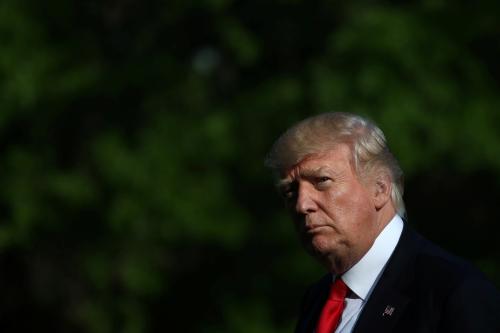
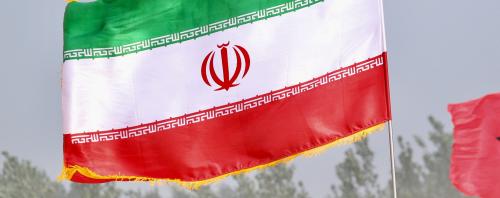
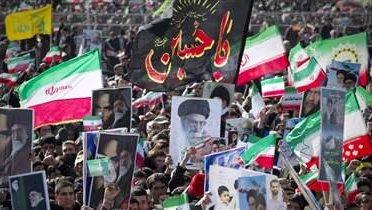

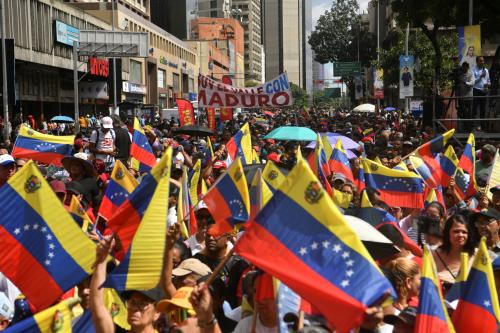
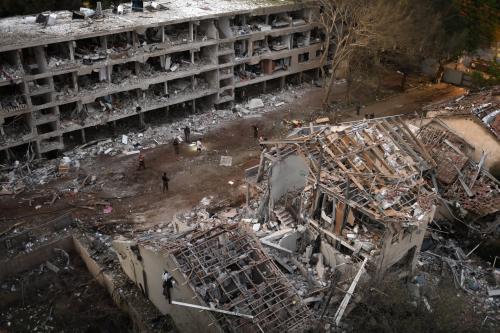

Commentary
Trump can help Iran’s protesters by rejecting his own Iran policies
January 3, 2018